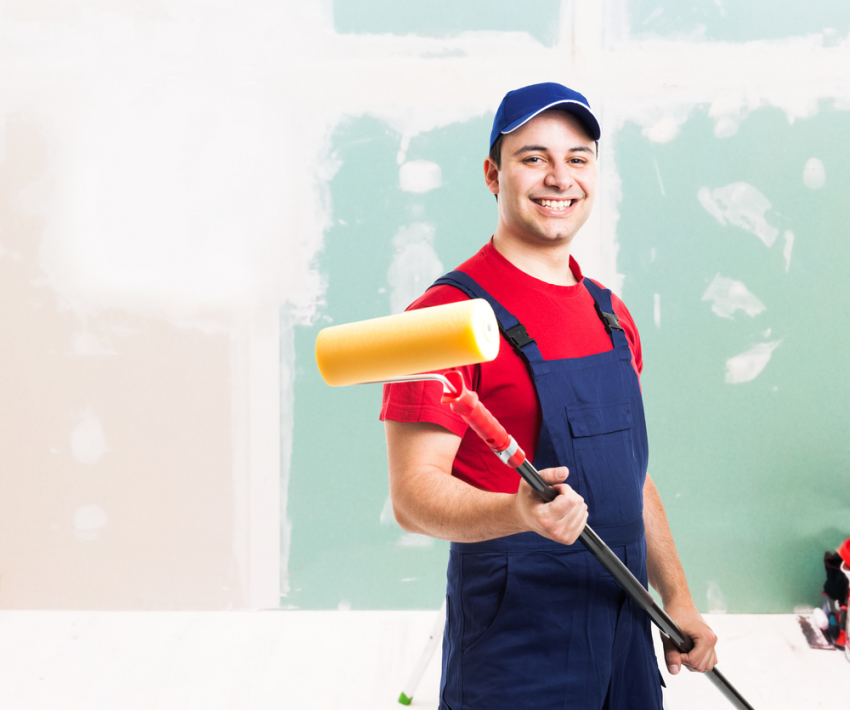HOW TO PREPARE YOUR HOME FOR PROFESSIONAL HOUSE PAINTERS

It’s exciting to plan for a new house paint job. You have been thinking about the colors and finishes that you would like for each room. You are looking forward to the old, damaged paint being removed and new paint being applied. You have hired a team of professionals house painters in Auckland who can handle any project.
You’re almost there. There are a few steps you can take to prepare your home for interior painting. This will protect your surfaces and the things in your rooms that you value most. Here are some tips your team might recommend.
- Room Cleaning
It is not just a matter of courtesy to thoroughly clean each room before the painters arrive. By removing as much dirt and dust from the room, it will be less likely that it will be moved around as painters work. If you reduce the amount dirt and dust in the room, it is less likely that the painter will kick up the dirt and dust during the project. This means the newly painted surfaces are less likely be damaged.
- Decluttering and Improving Access
Paint will be less likely to drip onto important surfaces if the room is less crowded. Remove obstructions in the rooms that you intend to paint. This will allow your painting team to move around freely and to set up drop cloths, paints, brushes and other equipment to reach hard-to-reach places.
- Remove wall hangings and decorations
Remove anything from your walls to prepare the room for interior painting. Remove any wall decor such as clocks, pictures, artwork and decorative fixtures. Store them safely outside the area that you intend to paint. After removing these items, you don’t have to worry about leaving nail holes or marks behind on the walls. Before applying primer or paint, you will need to do a thorough surface preparation. This includes cleaning your walls and repairing, smoothing and patching your drywall.
- Remove Furniture from the Wall
Paint can damage furniture. Before painters arrive at your home, move furniture away from walls. It should be removed completely if possible. Depending on your preferences and the needs of your paint team, small items can be moved into the middle of the room.
- Remove Throws, Rugs and Curtains
Remove window treatments and curtains before you begin your painting project. If your painting crew needs to touch up trim and windows, removing drapes and window coverings will make it easier. You’ll also want to remove any items that are normally draped or covering your furniture or floor to make room for dust, drop cloths, and fresh or dried paint.
- Plan to vacate the room
Once you know what rooms will be painted when, it’s smarter to plan ahead. It may be helpful to plan meals elsewhere while your cabinetry is being painted. It may be easier to stay at a friend’s or family member’s house or book a hotel room if bedrooms are being painted. Pets can be boarded while the rooms are painted. This will largely depend on your specific painting project. Painting projects are usually scheduled weeks in advance. Your painting team can give you ample notice if you need to adjust your routine.
- Keep an eye out for damage
You should let your painter know if there are any noticeable wall or trim damage or if it appears that moisture has caused wood to rot. This will allow them to plan and recommend additional surface preparation and repair.
- Do not be afraid to ask questions
When it comes to preparing for the arrival of house painters, all questions are good questions. It is smart to ask your residential painting contractor what steps you should take before their arrival to make sure the process is stress-free and smooth. Ask your preferred residential painting contractor what you should remove, clean, and store before the project begins. Also, ask about any specific steps that you will need to follow to prepare for a successful interior paint job.
- Let the experts handle the rest
You’ll have to follow a few steps before you can paint your room. This gives you peace of mind when you are looking forward to the newly repainted and refreshed rooms. Our team will:
- Visit the site to determine the unique requirements and size of each area that we will be painting.
- Repair and replace any wood rot that may occur on the surface.
- Drop cloths or other protective covers should be used to cover all surfaces that we plan to paint.
- Remove any damaged or old paints and primers.
- Repair drywall with a patch
- Prepare the surface to be painted by sanding it.
- Use professional primers and paints for the results you want




Leave a Reply